PROTECT YOUR DNA WITH QUANTUM TECHNOLOGY
Orgo-Life the new way to the future Advertising by AdpathwaySlicing into a watermelon during the peak of summer is one of the best ways to give yourself a reprieve from the heat, especially if you’ve just spent a few hours working in the garden. ‘Crimson Sweet’ is a time-tested favorite that yields large, pink-fleshed melons perfect for slicing and sharing with friends.
The plants take over three months to mature, so planting them early in the summer is one key element of growing a successful crop. You’ll also need to supply the proper amount of water, watch out for diseases, and know how to pick a ripe watermelon.
If you’ve never grown watermelons before, don’t be intimidated. I’ll share key growing information as well as helpful tips for growing a successful crop.
Crimson Sweet Watermelon
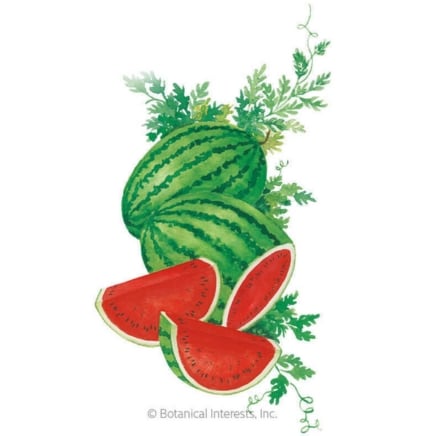
Crimson Sweet Watermelon Seeds

Sugar Baby Watermelon Seeds
Mountain Sweet Yellow Watermelon
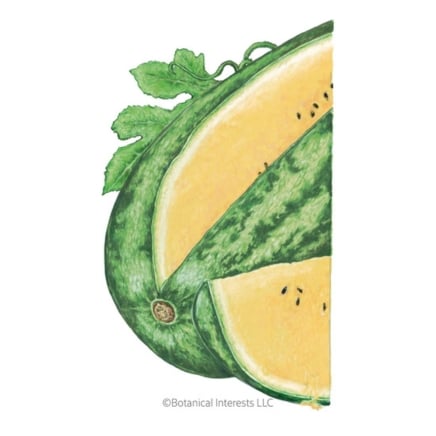
Mountain Sweet Yellow Watermelon Seeds
’Crimson Sweet’ Watermelon Overview
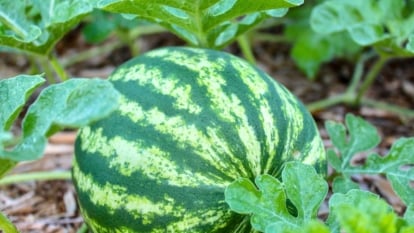
|
Plant Typ Annual Family Cucurbitaceae Genus Citrullus Species Lanatus |
Native Area North and Central Africa Exposure Full sun Height One foot Watering Requirements Moderate to high |
Pests & Diseases Downy mildew, powdery mildew, alternaria leaf blight, cucumber beetles Maintenance Low Soil Type Well-draining Hardiness Zone 3-11 |
What Is It?
‘Crimson Sweet’ is one of the most widely grown watermelons in the United States. It’s what many people think of when they’re looking for a melon for a summer picnic or backyard party: large with a striped green rind and bright pink flesh.
The melon first emerged in 1963 thanks to the efforts of Charlie Hall. Hall developed an interest in botany and plant breeding while attending the University of Arkansas, then went to Kansas State to earn a doctoral degree. While earning his doctorate, he continued to breed watermelons.
After breeding the melons for ten years, he released the ‘Crimson Sweet’ variety in 1963. This cultivar won the All-American Selections award the following year.
Characteristics
 Crimson Sweet has a rind with dark green stripes and a bright pink interior.
Crimson Sweet has a rind with dark green stripes and a bright pink interior. ‘Crimson Sweet’ has a beautiful and distinctive rind with light and dark green stripes. The melons grow close to a foot in diameter and weigh between 15 and 25 pounds. Slicing into the rind reveals bright pink flesh with an impressive sweetness. The melons aren’t seedless, but they produce fewer seeds than many other watermelon varieties.
The plants have a vining growth habit, so expect them to quickly cover a large section of your garden. Deeply-lobed leaves grow from the vine and remain close to the ground. Eventually, the plants produce small, yellow flowers, some of which are female and others male.
After the female flowers are properly pollinated, they begin producing fruit. The fruits start out small, but quickly grow with a moderate amount of water and lots of sun. You can expect to harvest the first fruits about 85 days after sowing the seeds.
Native Area
 The wild ancestors of watermelons originated in Africa.
The wild ancestors of watermelons originated in Africa. Watermelons first emerged in areas of North and Central Africa. The modern varieties of watermelons we’re familiar with barely resemble the native plants and were created after years of plant breeding.
Planting
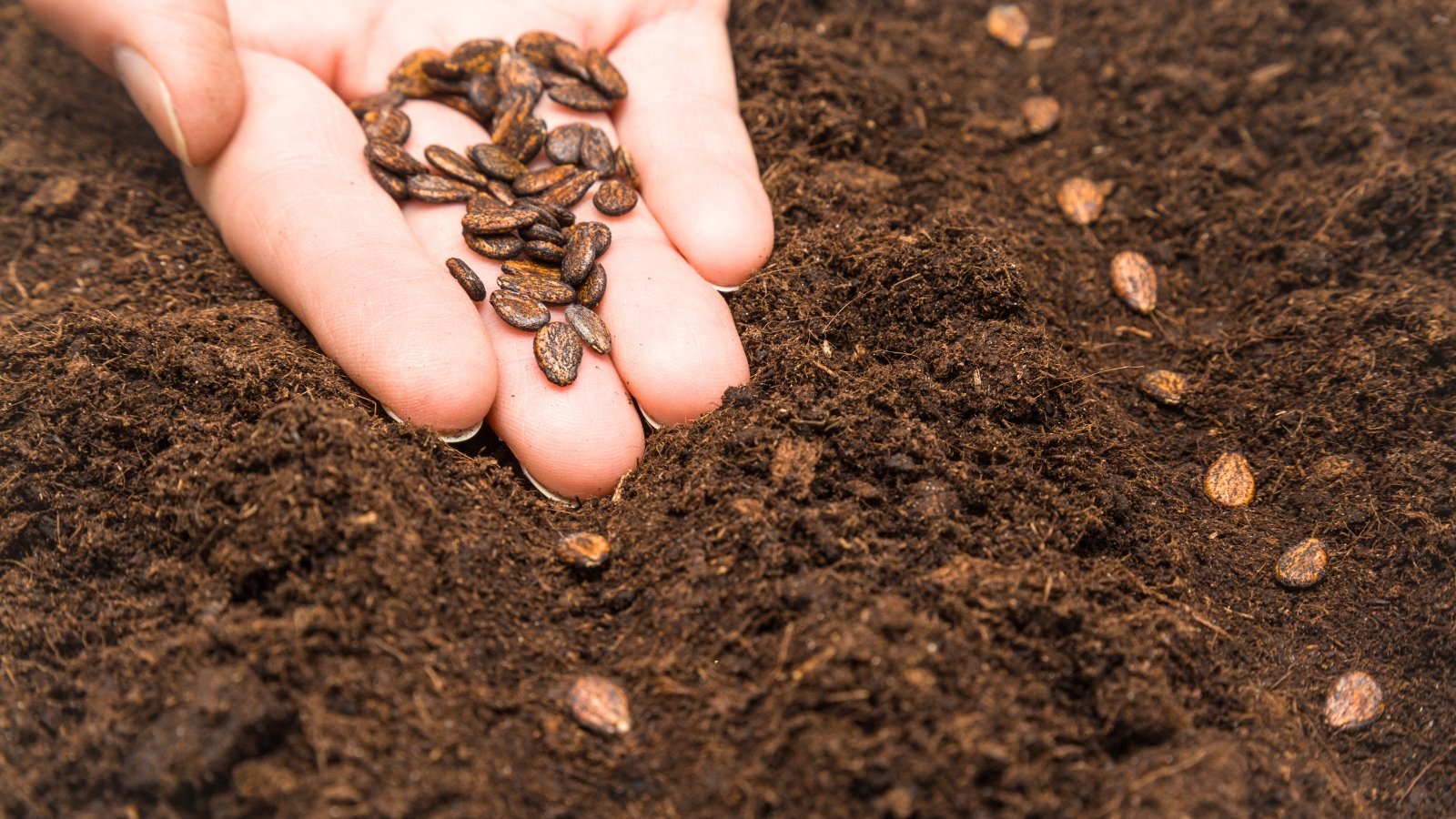 Start seeds indoors and transplant for an early start, or direct sow in the garden for an easy process.
Start seeds indoors and transplant for an early start, or direct sow in the garden for an easy process.Like with all melons, you can grow ‘Crimson Sweet’ watermelons by transplanting seedlings or direct sowing the seeds. Either method works well, but transplanting allows you to get a jumpstart on the growing season. Since direct sowing is easier and removes the risk of transplant shock, it’s generally the preferred planting method.
Regardless of whether you want to start seeds indoors for transplanting or sow them directly in your garden, keep a few key points in mind.
First, remember that watermelons are warm-weather crops that require high temperatures to germinate and grow well. The seeds germinate best when the soil is between 80 and 95°F (27-35°C), and germination severely suffers when the soil is below 70°F (21°C). So, wait until the soil warms outdoors, or start the seeds indoors on a heat mat.
Second, bury the seeds at the appropriate depth. Since watermelon seeds are larger than many other types of seeds, you can bury them about one-half of an inch deep.
Finally, plant at the proper spacing. These plants like to sprawl, so allow three feet of space between each plant. You can plant multiple seeds per hole, but thin to one plant once the seedlings have their first set of true leaves.
How to Grow
‘Crimson Sweet’ watermelons are moderately difficult to grow, so don’t be intimidated if you’re a beginner grower. Here are the ideal growing conditions and some care tips.
Light
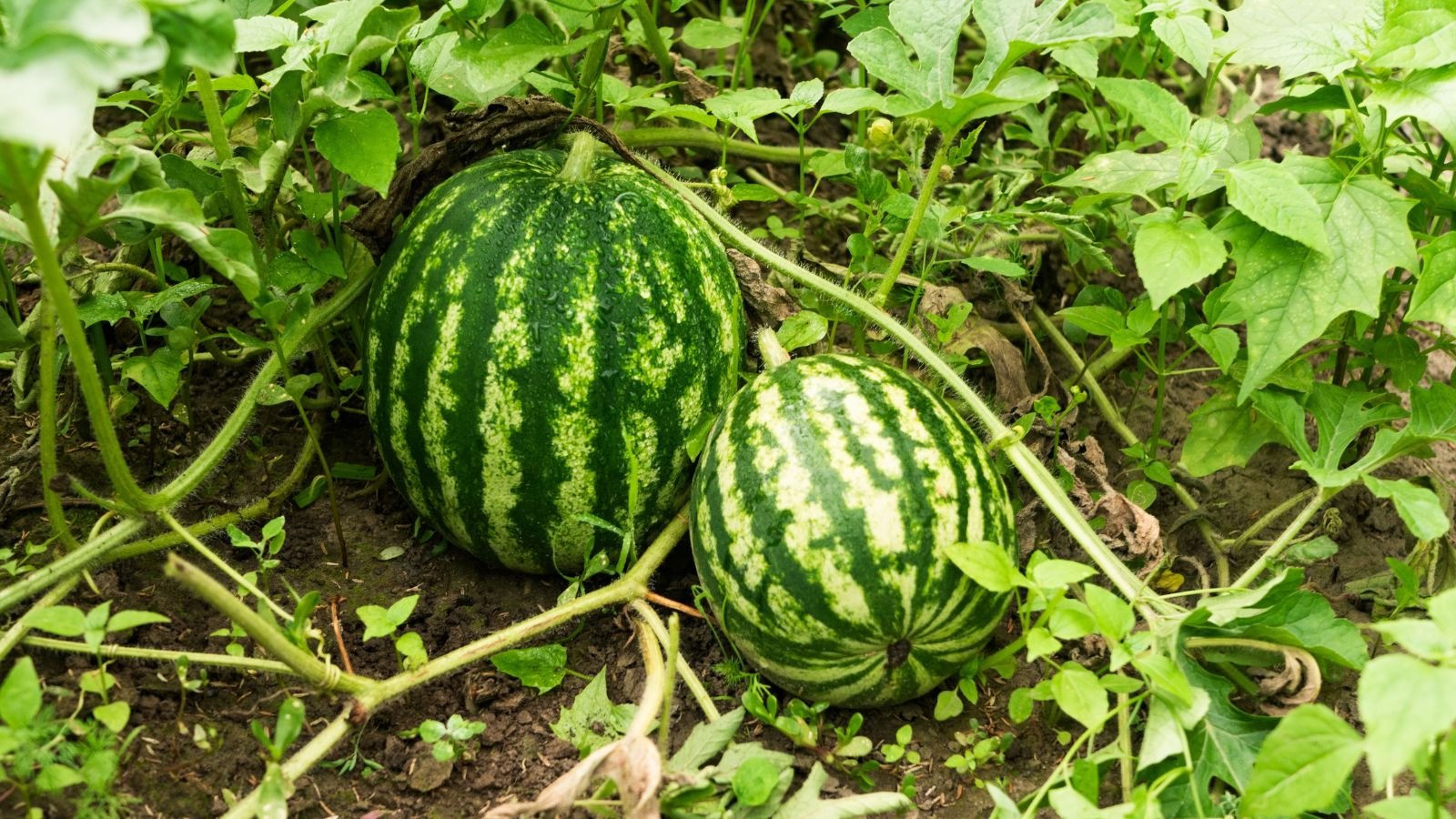 Plant Crimson Sweet watermelons in full sun.
Plant Crimson Sweet watermelons in full sun. ‘Crimson Sweet’ watermelons grow best in full sun. Plant them in a location that receives at least eight hours of bright light, and opt for afternoon shade over morning shade.
Water
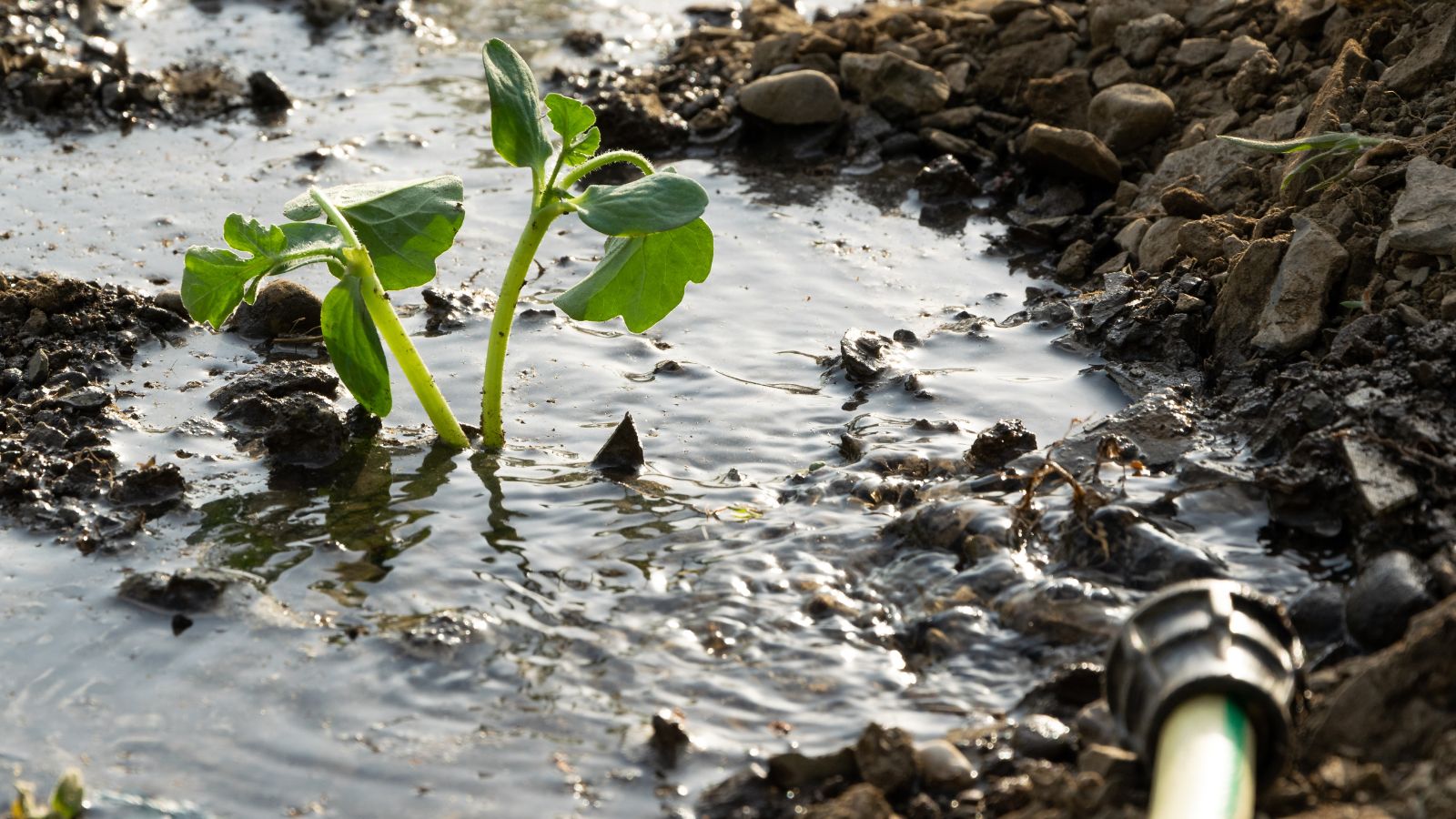 Drip irrigation is best to avoid wet foliage and subsequent diseases.
Drip irrigation is best to avoid wet foliage and subsequent diseases.You know how watermelons are so juicy? Well, the plants require a lot of water to grow these juicy fruits.
‘Crimson Sweet’ requires one to two inches of water per week to produce healthy stems, foliage, flowers, and fruit. The temperature, humidity, soil type, and mulching all impact how often you should water, so pay attention to the soil moisture level to determine when to water. If the top two inches of soil are dry, it’s time to irrigate.
Drip irrigation is the best option since it keeps the plant’s leaves dry and decreases the risk of foliar disease. You can also use a watering can or hose, but water near the base of the plant.
Although watermelons like moist soil during most of their life, you should decrease the amount you water during the last two weeks of the fruit ripening. This prevents the melons from splitting open and also causes the sugars to concentrate.
Soil
 Watermelons thrive in rich, well-draining soil.
Watermelons thrive in rich, well-draining soil. ‘Crimson Sweet’ can grow well in various soil types, but it thrives in well-draining soil that’s rich in organic matter. Avoid soggy or compacted areas of your garden, and mix in a few inches of compost before planting. Conducting a soil test can help you determine if you need to adjust the pH (aim for a range of 5.8 to 6.8) and add additional nutrients.
Temperature and Humidity
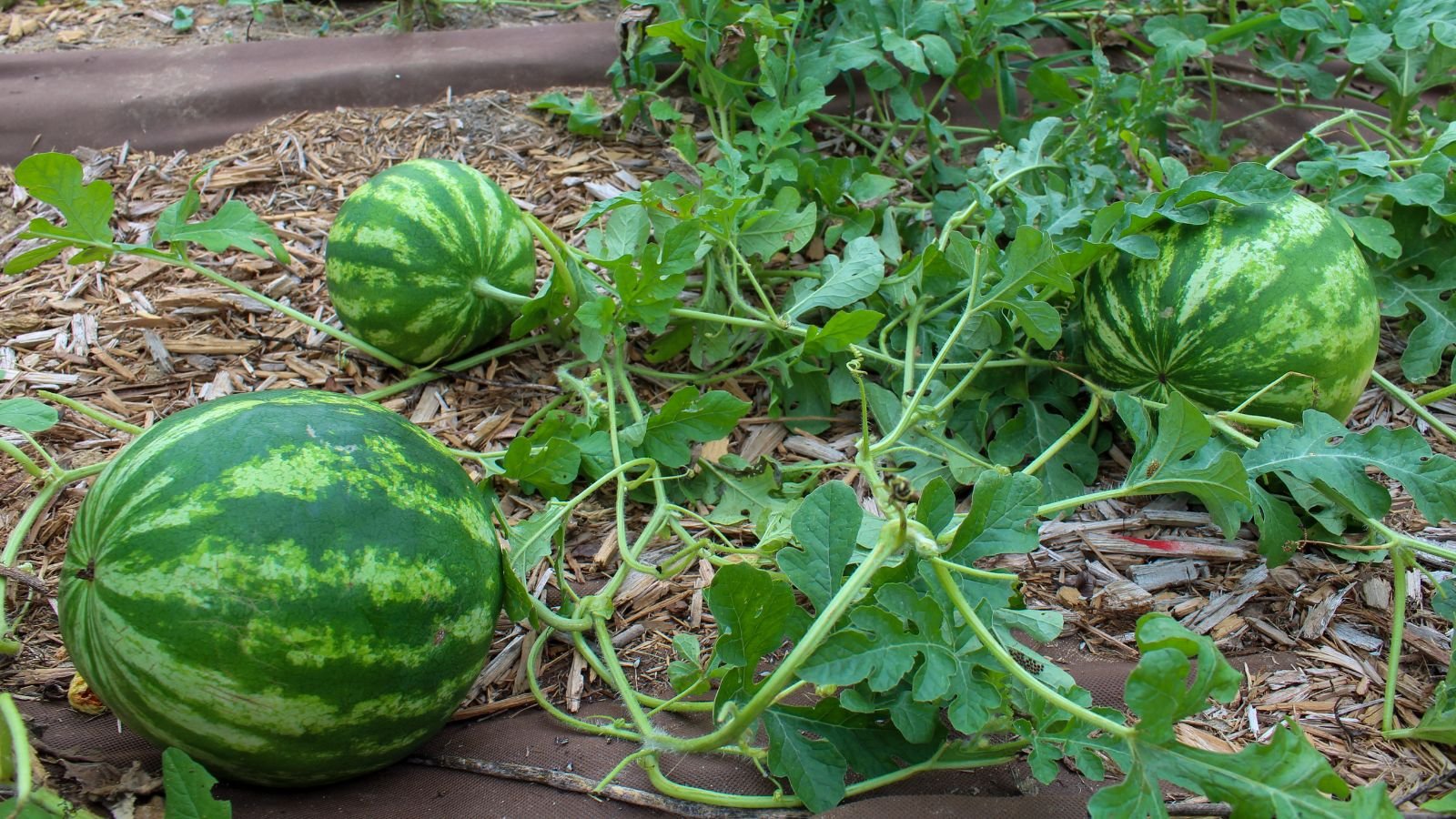 Wait until nighttime temperatures are consistently above 50°F to plant.
Wait until nighttime temperatures are consistently above 50°F to plant. These melons thrive in the warm, long days of summer. They won’t survive a frost and will become stressed when the temperatures are regularly below 50°F (10°C). Therefore, you should wait until the nighttime temperatures are stable before planting them outdoors.
Covering the recent transplants with row cover during the beginning of their life will help keep them warm and ease their transition into their new environment.
High humidity leads to greater risk of foliar fungal diseases, but it won’t harm the plants directly.
Fertilizing
 Add compost to soil before planting for a nutrient boost.
Add compost to soil before planting for a nutrient boost. These watermelons require a moderate amount of fertility to remain healthy and produce fruit. Conducting a soil test before planting is always an option, since it lets you know which nutrients are present and lacking. After you receive the results, you can determine which nutrients you need to apply.
Adding compost before planting is a good start since it adds some nutrients and provides organic matter that helps feed soil microorganisms. If you don’t conduct a soil test, you can add a balanced fertilizer at planting time. Adding a fertilizer higher in phosphorus and potassium during the growing season will encourage the plants to produce flowers and develop healthy melons.
Along with applying the three macronutrients, pay attention to other elements. Although plants don’t require large doses of micronutrients, these trace minerals play crucial roles in plant growth and health. Fertilizers like azomite, worm castings, and liquid seaweed supply these elements to your plants.
Maintenance
 Limit weed growth with a layer of mulch.
Limit weed growth with a layer of mulch. ‘Crimson Sweet’ doesn’t require a ton of maintenance, but it’s important to find a way to manage weeds before your plants cover the ground. Since watermelons sprawl feet in every direction, it’s difficult to walk amongst the plant to pull weeds while avoiding stepping on the vines and leaves.
Adding mulch prior to planting is one of the best ways to limit weed growth. Make sure to pull any large weeds before laying the mulch, or they’ll just grow right through it. You can use organic materials like wood chips and straw, or lay down landscape fabric.
Another piece of maintenance to consider is trellising. Although ‘Crimson Sweet’ grows vines that can work their way up a stake or metal trellis, I don’t recommend training this plant to grow vertically. The large fruits are tough to support and readily break from the vine when they’re suspended in the air.
Harvesting and Storage
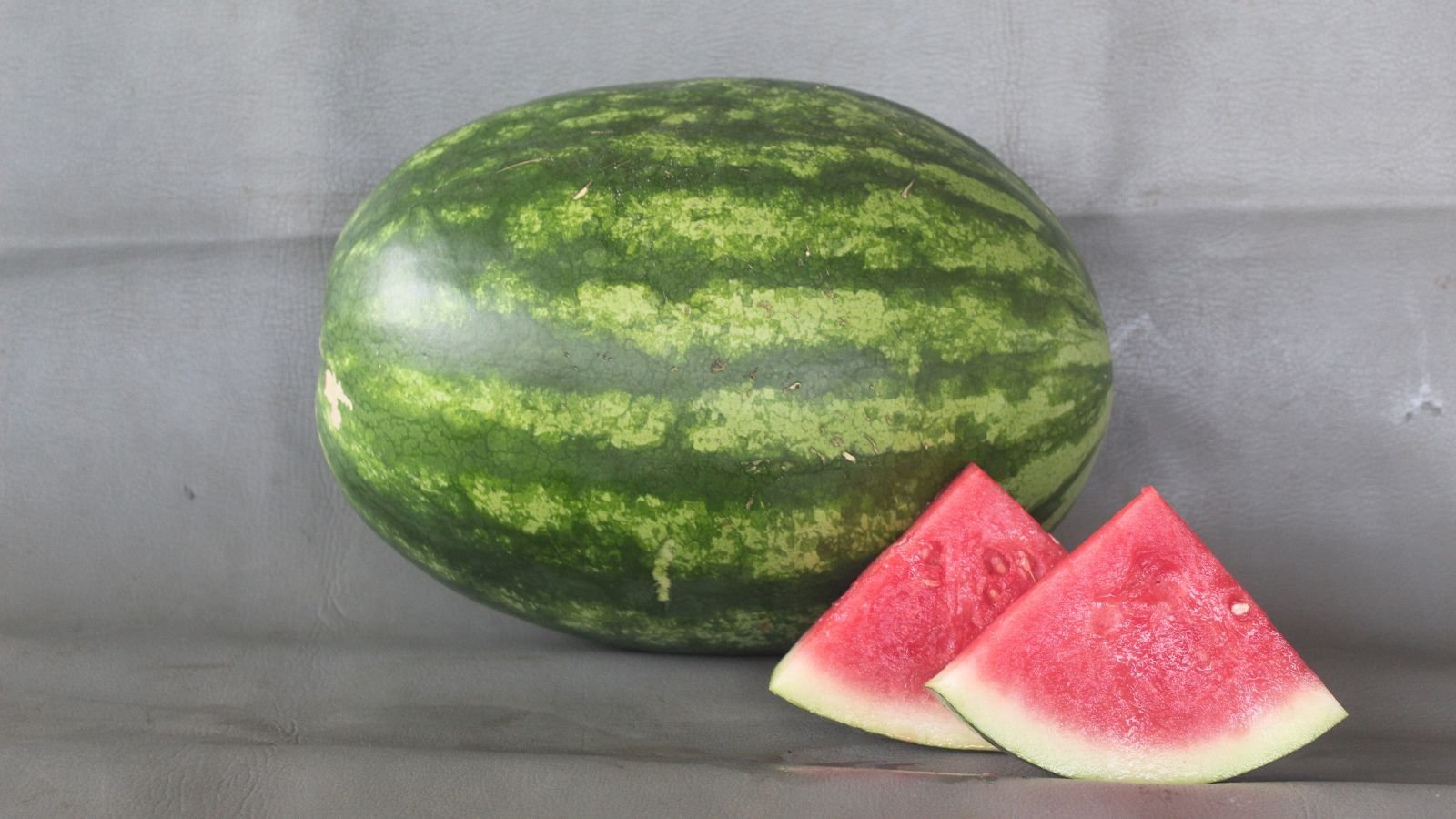 Check for a shriveled, yellow or brown tendril closest to the fruit.
Check for a shriveled, yellow or brown tendril closest to the fruit. ‘Crimson Sweet’ melons ripen around 90 days after planting. You may have heard that it’s difficult to tell when a watermelon is ripe, but there are a few signs you can use to determine when to harvest the melons.
First, use the days to maturity to calculate the predicted harvest time. If you think your melon is ready to pick but you planted it 70 days ago, you’ll need to wait a couple of weeks longer.
Second, check the tendril closest to the fruit. The normally pliable green curl will shrivel and turn yellow or brown when the melon is ripe.
You can also look for a yellow spot where the melon sits on the ground, but not all ripe melons develop this spot. Thumping the watermelon and listening for a deep sound is another tactic, but it takes some practice to know which sound indicates a ripe fruit.
After you pick your watermelon, you can store it in the refrigerator for a week.
Common Problems
‘Crimson Sweet’ plants are resistant to Fusarium wilt and anthracnose, but they’re still susceptible to other diseases as well as a host of insects and environmental issues. Here are some potential issues to watch for, along with strategies for prevention and management.
Powdery Mildew
 Avoid overhead irrigation to prevent foliar diseases.
Avoid overhead irrigation to prevent foliar diseases. Powdery mildew is a fungal disease that coats watermelon leaves in a fine, white powdery substance. Although the fungus doesn’t harm the plant directly, it limits photosynthesis. It appears on older leaves first and is more common in damp and humid conditions.
You can help prevent powdery mildew by avoiding overhead irrigation and planting in a location with morning sun. However, the fungus may still appear. If you spot it early, you can prune and dispose of infected leaves. Spraying neem oil or a copper fungicide can stall the fungus’ spread.
Downy Mildew
 This fungal disease thrives in humid conditions.
This fungal disease thrives in humid conditions.Downy mildew is another fungal disease, but the symptoms are different from those of powdery mildew. It also thrives in moist conditions, so look for it after rain or during humid periods.
When plants are infected the leaves develop yellow spots. Eventually, these spots turn brown. Entire leaves can turn brown if the fungus is left untreated.
You can help prevent downy mildew by keeping the foliage dry and spacing plants for good airflow. If the disease appears, spraying neem oil or a copper fungicide can help. Severe infections are difficult to treat, so pulling the plant is often your best option.
Alternaria Leaf Spot
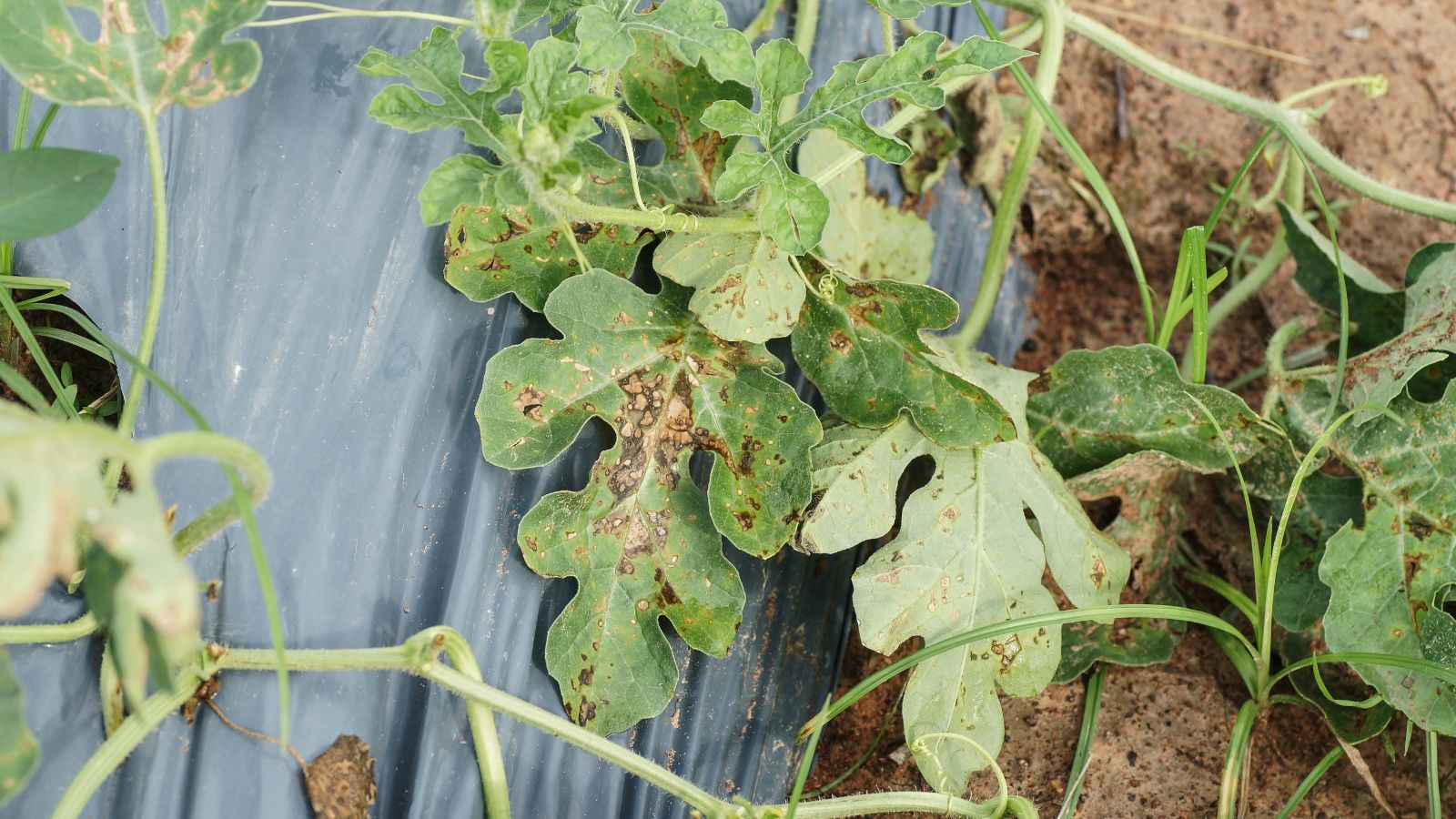 Look for circular brown or tan lesions on leaves.
Look for circular brown or tan lesions on leaves.Alternaria leaf spot is a fungal disease that appears as small, circular brown or tan lesions on watermelon leaves. As the disease progresses, the spots can enlarge and develop dark concentric rings, giving them a bullseye appearance. Severe infections may lead to leaf curling, yellowing, and premature drop, all of which decrease the plant’s availability to produce healthy fruit.
This fungus often shows up in warm, humid weather, especially when plants are stressed or damaged. To help prevent alternaria, avoid overhead watering, rotate crops, and remove plant debris at the end of the season.
If the disease develops, prune and discard infected leaves. Applying a copper fungicide or biofungicide can limit its spread.
Cucumber Beetles
 Watch out for cucumber beetles, who also spread bacterial wilt.
Watch out for cucumber beetles, who also spread bacterial wilt. These small yellow and black beetles prefer cucumbers, but they will also feed on watermelon. They chew the plants’ leaves, causing small holes, and they also spread the dreaded bacterial wilt that causes plants to quickly collapse.
Covering plants will protect them from the beetles, but you need to uncover them for pollination. If you see the pests on your plant, try hosing them off with a strong jet from the house. If that doesn’t work, you can treat them with neem oil, spinosad, or insecticidal soap.
Frequently Asked Questions
‘Crimson Sweet’ plants produce one to two melons per plant. Although this isn’t a huge number, the melon’s large size makes up for it.
Since these melons take close to 90 days to mature, they’re not the best option for locations with a short growing season. However, you can grow them by starting seeds indoors and planting out as soon as the weather warms.


 3 weeks ago
22
3 weeks ago
22





















 English (US) ·
English (US) ·  French (CA) ·
French (CA) ·